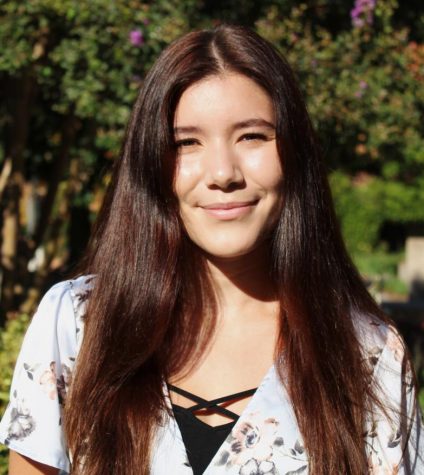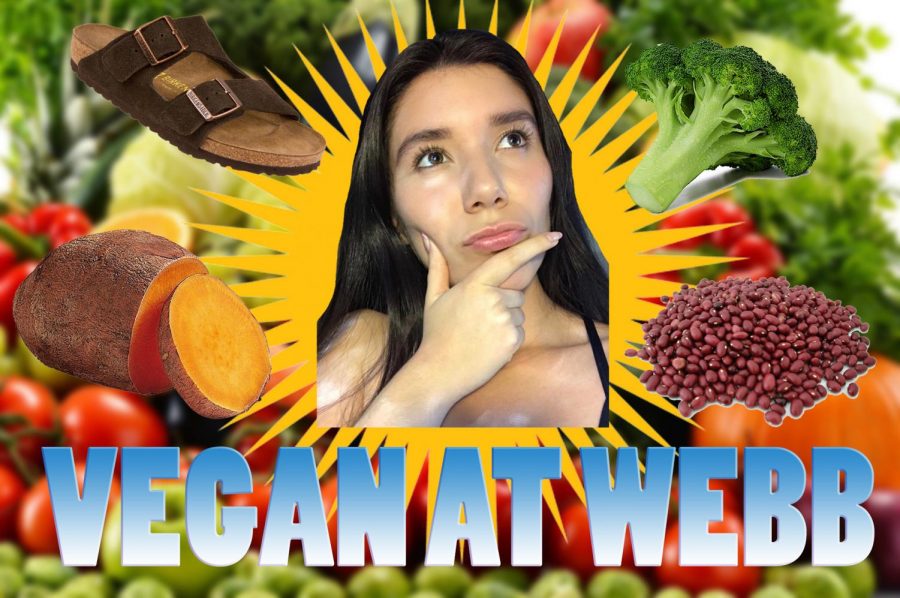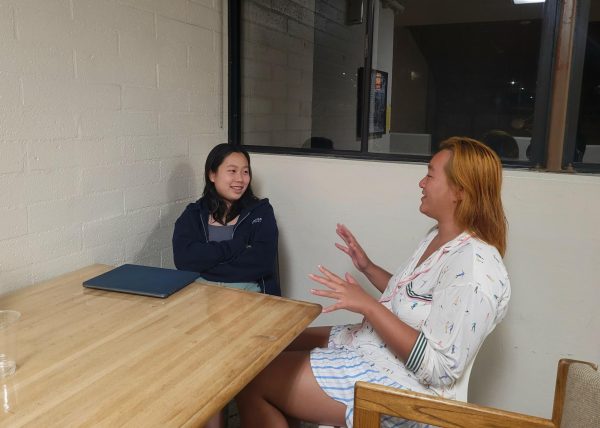Vouching for veganism
“I never imagined that I would ever be vegan. I love sushi, eggs and bacon, ice cream, Parmesan cheese, everything. But when my friends and I realized how much of an impact changing our diets could have on combating climate change, I was determined to be vegan and stay vegan. Being vegan has been my small way of helping the world. I like to think of myself and my other vegan friends as tiny green superheroes with tiny green lasers shooting out of our palms..” Rachel Kho ‘19
We all have that one friend who won’t let the group go to Chick-Fil-A on a Tuesday night or says, “Don’t worry, go wherever you guys want, I won’t eat, it’s okay,” when you clearly know that it is not okay. I’m talking about vegans. It seems that recently veganism has become more of a cool trend rather than a lifestyle that promotes its original values of animal protection. Nevertheless, there are legitimate benefits to a vegan diet sans Birkenstocks or faux leather.
Veganism started out as an activist philosophy against the mistreatment and consumption of animal products that dates back to 500 BCE when Pythagoras promoted benevolence between all animals. The first modern-day vegans popped up in 1944, when Donald Watson called a meeting with five other non-dairy eating vegetarians. Today, some vegans limit their exclusion of animal products to their food while others avoid the products that pertain to all aspects of their lives. A vegan diet restricts common food groups like dairy and meat and highly encourages fruits, vegetables, and legumes. The diet has been said to reverse disease, improve energy, and restore the body to its natural homeostasis.
According to the U.S. National Library of Medicine, “approximately 65% of the human population has a reduced ability to digest lactose after infancy.” Lactose is a sugar found in milk, cheese, and yogurt. Humans stop producing lactase, the enzyme that breaks down lactose, around 2-5 years of age, yet humans are the only species in the world that continue to consume milk (from a different species!) well into adulthood. The undigested lactose often ferments in the colon creating irritating digestive issues like nausea, bloating, and cramping. Even though some people have evolved to maintain a tolerance for lactose, it is beneficial to get rid of dairy altogether.
If you are going to cut out dairy, which will also benefit your skin, you need not be concerned about brittle bones or a Vitamin D deficiency. Walter Willett, M.D, Ph.D, the “second-most-cited scientist” in all of clinical medicine and the head of nutrition at Harvard’s School of Public Health, has found that countries with the lowest consumption of dairy also have the lowest rates of osteoporosis. Vitamin D is much more effective in preventing fractures than calcium, and calcium is more beneficial as a supplement than in a dairy product. Dairy consumption even increases the body’s level of insulin-like growth factor (IGF-1), a known cancer promoter!
The next main vegan no-no is meat. If you’ve seen the Netflix documentary What the Health, you already have an idea of the problems that come with meat production and consumption. Of course, there are vegan ways to obtain the recommended daily protein intake. Some people find it difficult to believe that a meatless diet can provide enough energy, especially for an athlete, but as long as you include sources like beans, lentils, nuts, seeds, tofu, chickpeas, oatmeal, and broccoli, you’ll feel full and energized without feeling sluggish or bloated.
What even is protein? Proteins are made up of amino acids which are either essential, nonessential or conditional. The body cannot create essential amino acids on its own so they must be supplied by food. The current Recommended Dietary protein allowance is 0.8g protein/kg body weight. For someone who is 150 pounds (68.039 kg) that is 54.431 grams of protein. A typical 7 oz serving of grass-fed steak provides around 37.8 g of protein. Given this information, that allows a little more than 16g of protein for the rest of the day, and even less if the person weighs under 150 pounds. Therefore, it may be more effective to ration less concentrated, more plant-based sources of protein throughout the day.
If you are thinking about going vegan short or long term, make sure to pay attention to your body. It may be difficult to switch diets overnight, especially if you are going from a total omnivore to strictly vegan. If you want it to stick, ease into the vegan diet gradually. Cut out the easiest food groups first (maybe for you it is dairy or meat) and work your way up to full-on vegan. And if you mess up for one meal or one day, don’t beat yourself up. You should be doing this for you!
Need some inspo? Here’s an outline of a 5 day vegan lunch plan possible at Webb!
Monday
Strawberry Salad – spinach, strawberries, almonds, sunflower seeds
Side of melon (honeydew + cantaloupe)
Lentil soup (if available)
Tuesday
Brown rice- from the hot meal
Vegetables (broccoli, bell peppers, cauliflower)
Chickpeas
Tofu (optional)
Wednesday
Al’s Patio- Veggie Burger
Fruits + Veggies from salad bar
1 tablespoon sunflower seeds
Thursday
Whole wheat pasta w/ non-meat sauce
No cheese
Bread
Fruit/veggies on side (cauliflower/honeydew)
Friday
Baked potato with scallions (no butter)
Vegetable soup w/ crackers

Anissa Medina (‘18) is the Assistant Editor-in-Chief and Editor of Culture & Lifestyle of the Webb Canyon Chronicle and has been on the team for...










